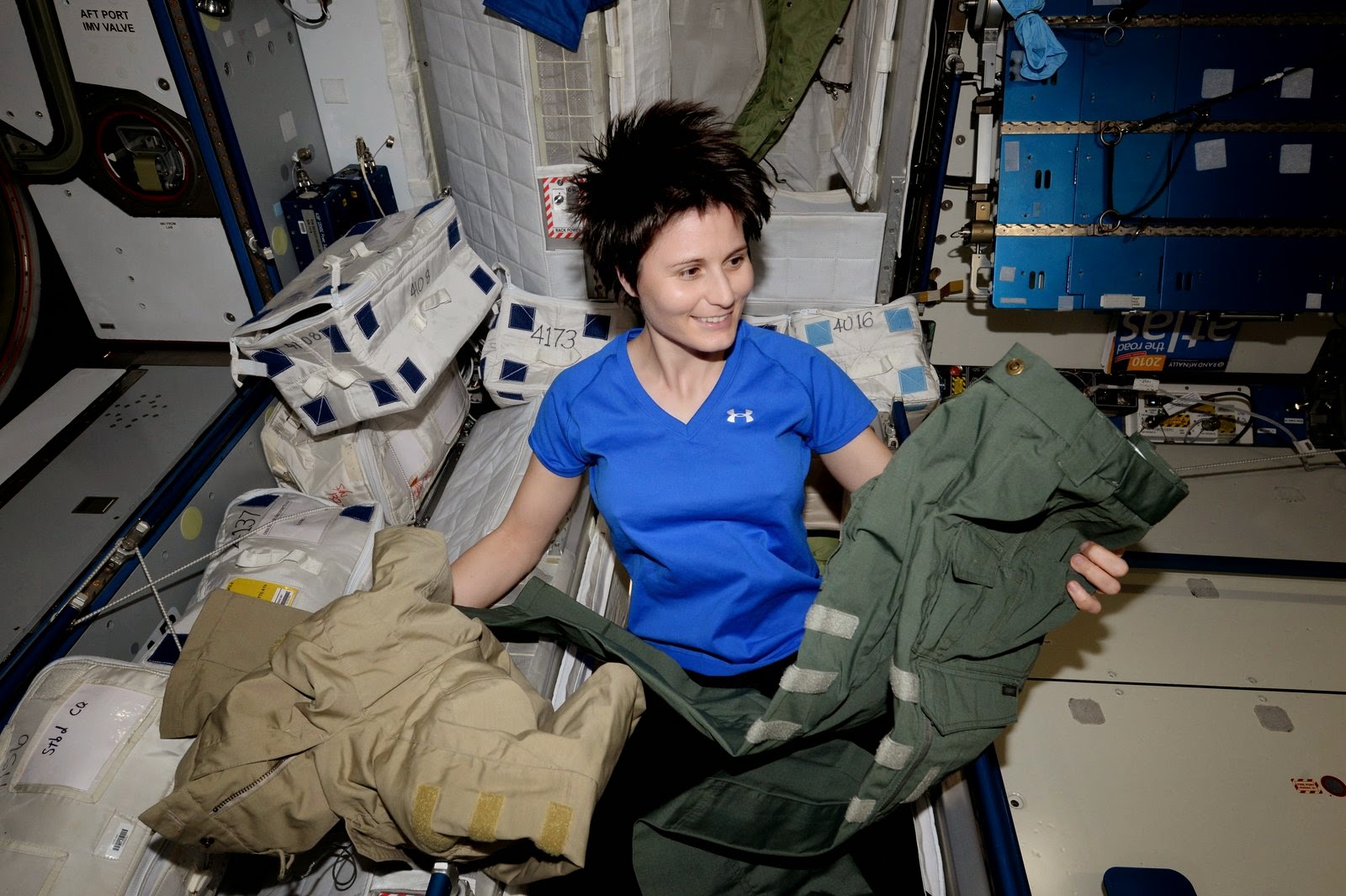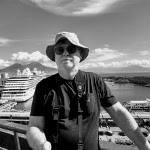
Originally shared by Samantha Cristoforetti
Logbook: L+27, L+28
I’m the Station’s night owl tonight , everybody else is already asleep in our little ring of four crew quarters in Node 2.
I like listening to the sounds of the Station at night. People sometimes tell me that they would like to hear the utter silence that they assume I hear in space, but the famous “In space no one can hear you scream” only applies to the vacuum of space: fortunately inside the Space Station we have a breathable atmosphere at about the same pressure you have on Earth at sea level. Plenty of molecules nicely tight together happily transmitting sound throughout the cabin.
There is always a significant background noise, due to the many fans and pumps running all the time: a constant humming that signals that the Station is “alive” and healthy. In fact, if we had an emergency, like a fire or a depressurization, even if the audible alarm wouldn’t go off we would immediately notice it because the Station would go quiet: the computers implement an emergency auto-response that shuts down the ventilation.
Some noises have taken me by surprise occasionally. Like the first time I noticed a different noise in our toilet cabin, accompanied by a distinct vibration I could feel through the foot restraints on the “floor”. Turns out it’s a normal occurrence when the ground controllers are running the urine processing assembly in a certain mode.
Or one day, as I was floating out of Columbus, I heard one of our science racks making a loud hissing sound for several seconds, then go quiet. I checked with Col-CC in Munich and it turned out that they were doing some commanding of our Electro Magnetic Levitator from the ground. So, all expected!
It’s quite common for the ground to send commands remotely. Most of what we do up here as crew are tasks that require us to be hands-on on hardware: all commanding of the station systems and science experiments that can be done from the ground remotely are typically implemented by the ground controllers on console in the different control centers. And it’s probably better to have the specialists for each system send commands to the Station.
It’s also a way of saving precious crew time: for example, many maintenance procedures have safing steps at the beginning to make sure that the equipment is not powered and is in a safe configuration. Mission Control is always ahead of us and they will have safing in place before we get a chance to ask.
So, as you can imagine, running the Space Station requires a lot of communication and coordination between crew and teams on the ground. And we can always count on dozens of specialists looking over a constant stream of telemetry to make sure all systems are healthy up here. Or even to help us out with little things like disabling smoke detectors: we have to do that in most modules before vacuum cleaning the filters on the weekend, to avoid the risk of triggering a false smoke alarm with dust, and we always get a helping hand from mission control to get that done.
Hey, I’ve been in space for almost a month now, which means that today was new-pants day for me! Yep, we get six for the mission, so today was time to see what was on offer in my space wardrobe. I actually thought that I would get six identical pants, but… surprise! This will be a green-pants month. I love these pants, by the way, they are very comfortable and practical, with plenty of pockets and Velcro stripes to secure things. Pockets are also all rigorously closed with Velcro, to prevent things from floating out. That’s because, as a rule and with no exceptions, things always want to flow out in space.
Futura mission website (Italian): Avamposto42
(Trad IT) Traduzione in italiano a cura di AstronautiCAST qui:
http://www.astronautinews.it/tag/logbook
(Trad FR) Traduction en français par Anne Cpamoa ici:
https://spacetux.org/cpamoa/category/traductions/logbook-samantha
(Trad ES – Currently not updated) Tradducción en español aquí:
http://www.intervidia.com/category/bitacora

